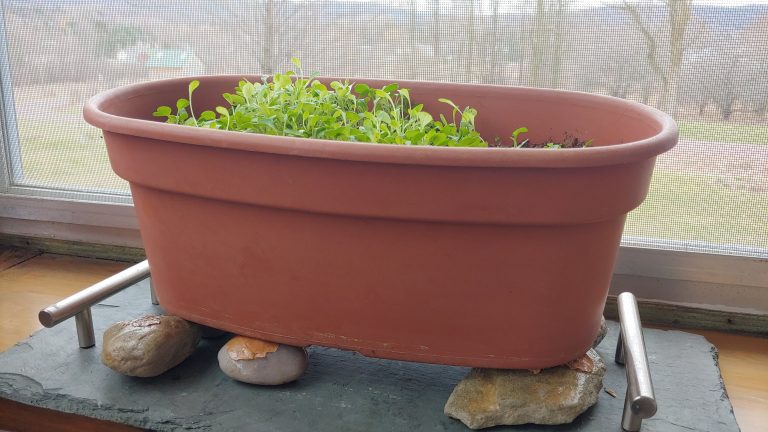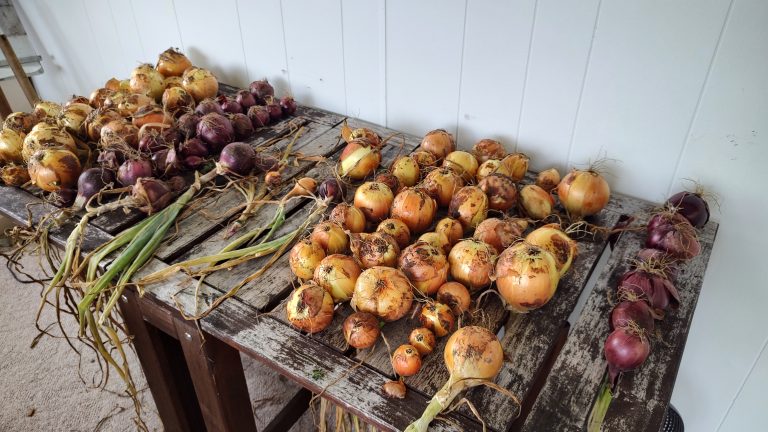This post may contain affiliate links.
Cucumber beetles are arch nemesis. They attack our cucumber plants right when we put them in, eating away at the leaves and leaving skeletons in their place. I can’t tell you how many years I have happily planted cucumber plants only to watch them waste before my eyes.
I needed a solution for getting cucumber beetles away from my plants.
Cucumber beetle traps are a non-toxic, natural way to address cucumber beetles so that your cucumber plants can get some relief from the constant barrage of insects.
They will grow stronger and eventually be able to hold their own against diseases and bugs.
Here’s a quick and easy guide on how to make your own cucumber beetle trap.
How to Make Cucumber Beetle Trap
Materials
- Yellow Plastic Cups (or plastic containers painted yellow)
- Tanglefoot Insect Barrier (or similar sticky coating for traps)
- 1 tsp Cloves
- 1/2 cup Oil (vegetable or olive)
- Cotton Balls
- Hole Punch
- Wooden popsicle stick or metal paint scraper
- Twist Ties
- Stakes (if your cucumber does not have a trellis)
Instructions
- First, make your clove oil. Gently toast the cloves on medium heat in an empty saucepan for about 5 minutes or until their scent is noticeable. Add the oil and gently simmer for 10 minutes. Turn off the heat and allow the cloves to infuse the oil for a day or two. Alternatively, you can buy clove essential oil.
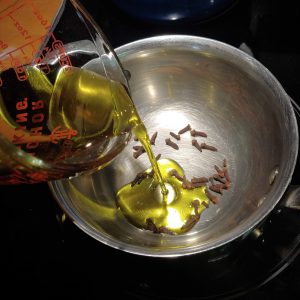
- Add your cotton balls (as many as you are making traps) to the clove oil and allow them to soak up the infused oil till they are coated (if you are using essential oil you only need a few drops on your cotton balls).

- Using a popsicle stick or scraper, put a smear of Tanglefoot on the bottom of your yellow plastic cup, then drop the oiled cotton ball down into the cup where the stickiness will hold it in place.
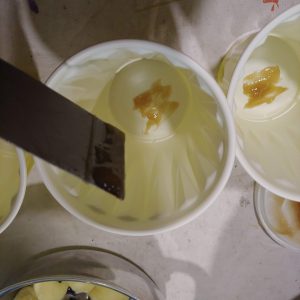
- Use your hole punch to punch 2 holes in the cup about 1/2 inch apart from each other parallel to the top lip of the cup.
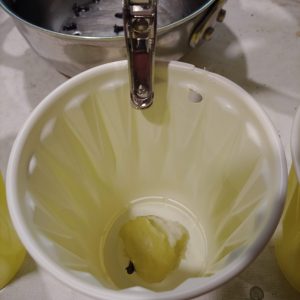
- Now, use the stick or scraper to paint the cup with Tanglefoot all around the inside (and outside if you want to cover all of your bases).
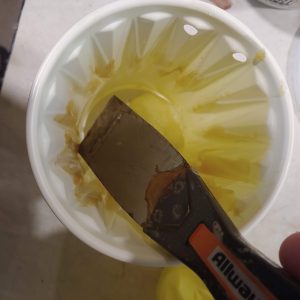
Your trap is now ready. Use the twist ties to attach it to a stake or your trellis if your cucumbers are planted near a trellis. Place the cup just above the plant, not close enough to touch the leaves. Hang it sideways so it will not collect water, and monitor it regularly to see if it is working. Move it if the plant gets too close to the stickiness.
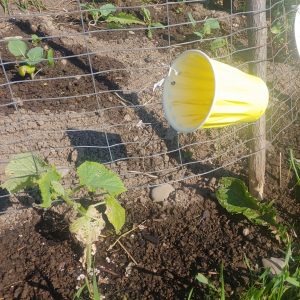
Frequently Asked Questions
How do Cucumber Beetle Traps work?
The basic premise behind a cucumber beetle trap (and other traps like it) is to lure the pest away from your plant and eliminate it (sorry, this one kills the bugs).
In the case of the cucumber beetle, you use a clove-infused oil in a yellow cup (they’re attracted to both the scent and the color) to attract the bug away from your cucumbers. You use a sticky painted surface to trap them.
Like other “sticky traps,” the bugs land and get stuck so they cannot return to your plants.
What supplies do you need to build a Cucumber Trap?
As described above, you need a few things to attract the cucumber beetles and something sticky to catch them. We made our clove-infused oil, in which we soaked cotton balls. We then placed the cotton balls in yellow plastic cups, painted with a Tanglefoot insect barrier (a sticky substance designed to trap bugs in your fruit trees).
You’ll also need some twist ties to attach the trap to a stake or your support structure if your cucumbers are set up to grow vertically.
Where do you place the cucumber beetle trap?
Cucumber beetles are flying insects, so a trap can be placed off the ground. You’ll want to put it on a stake, or tie it directly to a support structure. The cut should be placed close enough to your cucumber plant to attract the beetles headed to the plant but not close enough to touch the cucumbers.
Do cucumber beetle traps work?
Yes, we have found that these simple-to-make homemade cucumber beetle traps are effective at luring the beetles away from your plants so that the plants can grow stronger. The nice thing about these traps is that the bait and sticky substance are inside a cup, which lasts through rain and other weather.
Once your plants have gotten strong enough, the trap may no longer be needed, and you can likely take it down. We also like that this solution is non-toxic and does not rely on chemicals or other treatments directly on the plant.
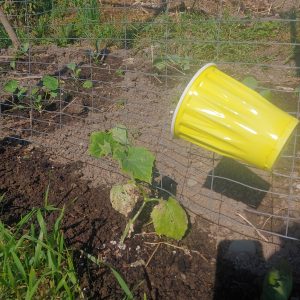
How to Make a Cucumber Beetle Trap
Ingredients
- Yellow Plastic Cups (or plastic containers painted yellow)
- Tanglefoot Insect Barrier (or similar sticky coating for traps)
- 1 tsp Cloves
- 1/2 cup Oil (vegetable or olive)
- Cotton Balls
- Hole Punch
- Wooden popsicle stick or metal paint scraper
- Twist Ties
- Stakes (if your cucumber does not have a trellis)
Instructions
- First, make your clove oil. Gently toast the cloves on medium heat in an empty saucepan for about 5 minutes or until their scent is noticeable. Add the oil and gently simmer for 10 minutes. Turn off the heat and allow the cloves to infuse the oil for a day or two. Alternatively, you can buy clove essential oil.
- Add your cotton balls (as many as you are making traps) to the clove oil and allow them to soak up the infused oil till they are coated (if you are using essential oil you only need a few drops on your cotton balls)
- Using a popsicle stick or scraper, put a smear of Tanglefoot on the bottom of your yellow plastic cup then drop the oiled cotton ball down into the cup where the stickiness will hold it in place.
- Use your hole punch to punch 2 holes in the cup about 1/2 inch apart from each other parallel to the top lip of the cup.
- Now, use the stick or scraper to paint the cup with Tanglefoot all around the inside (and outside if you want to cover all of your bases).
Carrie Williams Howe is an educational leader by day and an aspiring homesteader by night and weekend. She lives on a small homestead in Vermont with her husband, two children, and a rambunctious border collie. She blogs about her family's homestead life at The Happy Hive.


